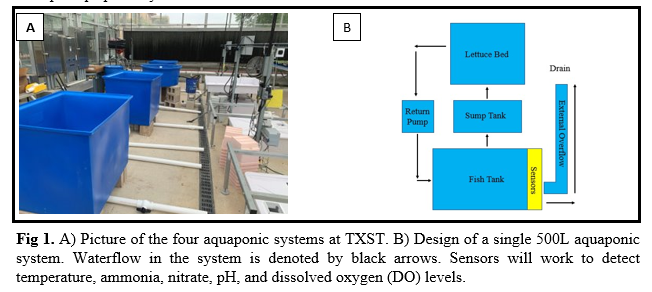A COMPREHENSIVE GUIDE FOR CREATING AND MAINTAINING A MID-SCALE AQUAPONIC SYSTEM
The field of aquaponics has grown significantly in recent years as a viable alternative to traditional agricultural and aquacultural practices. Through the coupling of farming and aquaculture, total water consumption is drastically reduced, food security increases, and minimal waste is produced. Additionally, the relationship between crops and fish is mutually beneficial. Fish produce ammonia, which quickly becomes lethal for them. Our system sends ammonia-rich water to a sump tank to be converted to nitrites and then nitrates by nitrifying bacteria. Those nitrates are then filtered out of the water by the plant roots and denitrified water is sent back to the fish tank.
The use of large-scale aquaponic systems for commercial purposes is still widely unexplored as an option due to uncertainties regarding growth and yield of both fish and crops. Our USDA founded project "Bluewater: A Smart Circular Economy for Integrated Organic Hydroponic Aquaponic Farming to Empower an Underrepresented Workforce", aims to develop a mid-scale aquaponic system by students at Texas State University. Joining forces with the Biology, Agriculture, and Engineering departments, we designed a zero-waste automated mid-scale system that will allow us to design experiments for the optimization of ornamental fish culture and crop production. Furthermore, the incorporation of automation has been looked at as a tool in making aquaponic operations more accessible. For example, using sensors to signal intervention when system conditions are approaching dangerous levels. The long-term goal is to produce protocols that can be implemented at larger scale aquaponic systems. This study is being conducted in a greenhouse at Texas State University and will serve as a guide on how to construct and maintain multiple aquaponic systems.
